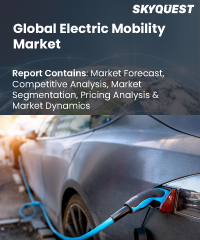
Report ID: SQSG45I2033

Report ID:
SQSG45I2033 |
Region:
Global |
Published Date: February, 2024
Pages:
165
|
Tables:
95 |
Figures:
76
Electric Mobility Market Driver
Rising Level of Greenhouse Gases to Boost Market Growth
Reduced EV Battery Costs
Electric Mobility Market Restraint
Lack of Booths for Charging Electric Vehicles
Our industry expert will work with you to provide you with customized data in a short amount of time.
REQUEST FREE CUSTOMIZATIONWant to customize this report? This report can be personalized according to your needs. Our analysts and industry experts will work directly with you to understand your requirements and provide you with customized data in a short amount of time. We offer $1000 worth of FREE customization at the time of purchase.

Report ID: SQSG45I2033